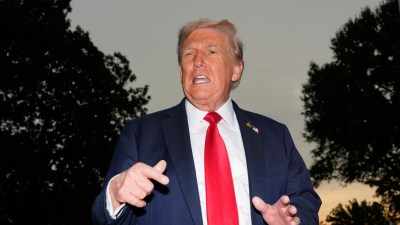GDR market remains dull
MUMBAI, March 28: Foreign investors seem to have adopted a wait-and-watch attitude in the global depository receipt (GDR) market. GDRs of ma...

MUMBAI, March 28: Foreign investors seem to have adopted a wait-and-watch attitude in the global depository receipt (GDR) market. GDRs of many Indian companies listed on overseas stock exchanges were generally listless in dull demand. Reflecting the lukewarm approach of market makers, the Skindia GDR index continued to fluctuate in a narrow band of 936 points and 952 points, during the week ended March 26. The index finally closed at 952.44 points registering a gain of 1.65 per cent.
Even though 65 GDRs gained a meagre 3.24 per cent, the underlying shares of these companies gained 5.52 per cent in domestic markets. The Skindia GDR index premium dipped by 1.06 per cent to close at 23.51 per cent on March 26. During the same period the Skindia GDR index P/E closed at 20.46 points recording a net gain of 0.66 per cent.
Interestingly, GDRs of steel and aluminium sector which had scored excellent gains during the second week of March, registered heavy losses on account of heavy bull liquidation. The GDR ofIndian Aluminium fell by 7.69 per cent to close at $ 3 and SAIL registered a net loss of 5.88 per cent to close at $ 4.00.
SBI which continued to remain firm at the local bourses at a price of Rs 286, dipped by 4.43 per cent to close at $ 19 at the GDR markets. Despite the dismal performance of the heavy weight index based stocks at the GDR markets, Dr Reddy’s GDR continued to firm up to touch an all time high of $ 14.25 on March 25 and SPIC traded at its 52 week highest bid of $ 4.75.A study conducted by Skindia Finance on the performance of VSNL GDR since its issue in 1997, showed that the GDR has lost ground by 25 per cent. Its GDR touched a low of $ 11.75 on January 12, 1998 and currently shows a negative six monthly annualised compounded return of 43.08 per cent.
Its underlying share too has underperformed the BSE Sensex losing 25.10 per cent as against a gain of 6.26 per cent in the latter during the same period. The VSNL GDR has been quoting at a premium of 29.10 per cent to its underlyingshare.
Further, a decline in the trading interest can be seen from declining volumes, which fell from an average Rs 1.09 crore in April l1997 to Rs 0.80 crore in March 1998. The trading frequency of the GDR in the past one year, has been 31.92 per cent.
“Much will depend on the policies of the new BJP government at the centre. The budget will give an indication of the things to come. I don’t expect the government to reverse any of the policies. But what is needed is cutting down the number of clearances, reducing bureaucratic bottleneck and taking the reform process to its logical conclusion,” said an official with a foreign firm.



- 01
- 02
- 03
- 04
- 05



























